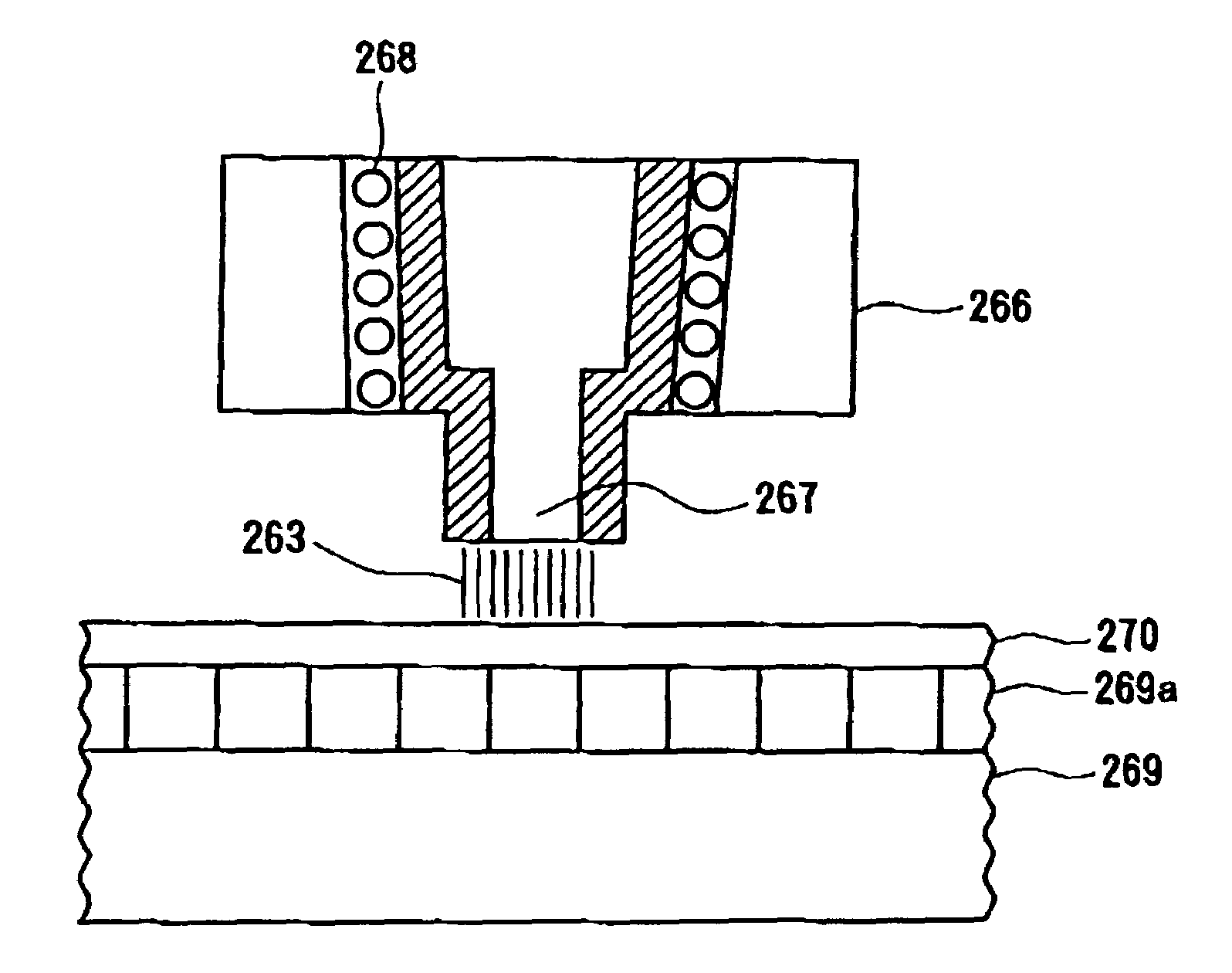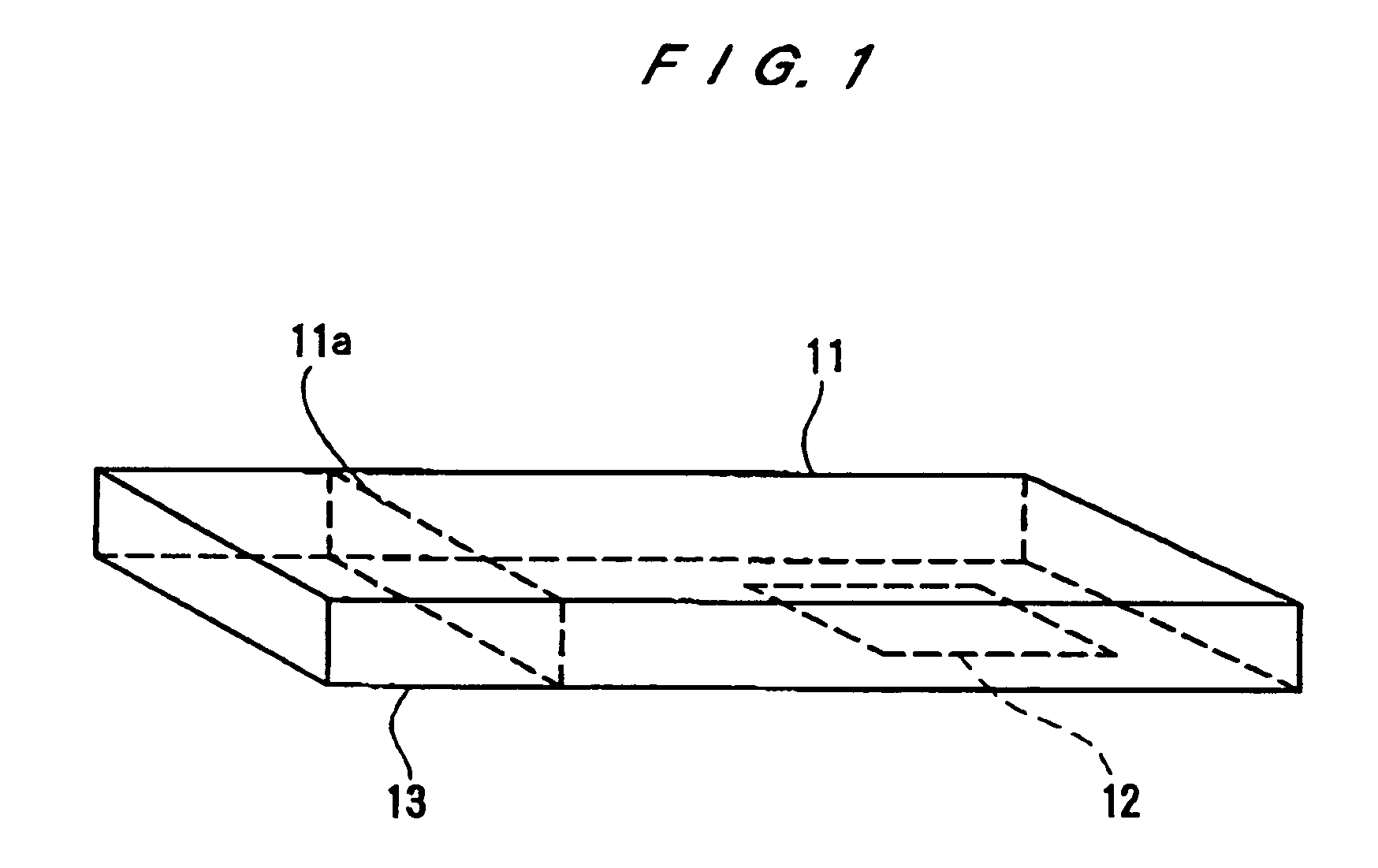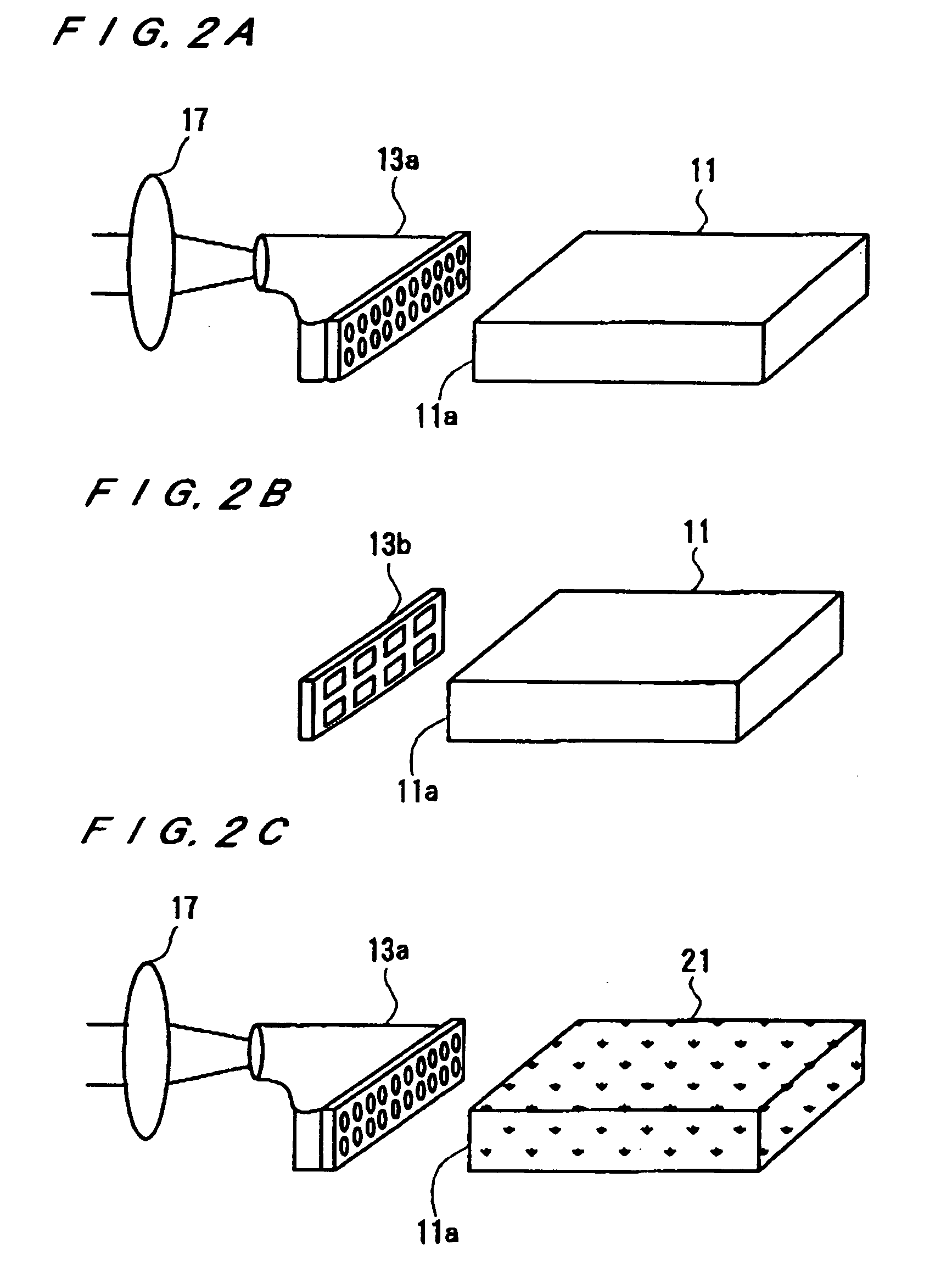Microfabrication of pattern imprinting
a micro-printing and pattern technology, applied in the field of micro-printing patterns, can solve the problems of consuming a vast amount of pattern-making time, limited degree of resolution achievable by photolithography, and ultimately limited minimum line width, and achieve the effect of simple method and low cos
- Summary
- Abstract
- Description
- Claims
- Application Information
AI Technical Summary
Benefits of technology
Problems solved by technology
Method used
Image
Examples
Embodiment Construction
[0103]FIG. 1 shows an embodiment of a photo-driven imprinting apparatus. A proximity field exposure pattern (shortened to proximity pattern hereinbelow) 12 is fixed to a section of a waveguide 11. A light source 13 is connected to an input surface 11a of the waveguide 11, and a light input into the input surface 11a propagates through the waveguide 11. The waveguide 11 is a flat plate, and its upper and lower surfaces are treated so as to obtain total reflection between the two surfaces. For example, all the surfaces, excepting both sections of the input surface 11a and the proximity pattern 12, are coated with a metal film. The waveguide 11 is made of quartz glass or a light-transmissive material such as polyimide, and excepting the input / output surfaces, the surfaces are coated with a metal film such as Cr, Al, Ag or Au. Therefore, an incident light beam entering from the input surface 11a are trapped inside the transmissive material of the waveguide 11. Thus the waveguide 11 can ...
PUM
 Login to View More
Login to View More Abstract
Description
Claims
Application Information
 Login to View More
Login to View More - R&D
- Intellectual Property
- Life Sciences
- Materials
- Tech Scout
- Unparalleled Data Quality
- Higher Quality Content
- 60% Fewer Hallucinations
Browse by: Latest US Patents, China's latest patents, Technical Efficacy Thesaurus, Application Domain, Technology Topic, Popular Technical Reports.
© 2025 PatSnap. All rights reserved.Legal|Privacy policy|Modern Slavery Act Transparency Statement|Sitemap|About US| Contact US: help@patsnap.com



